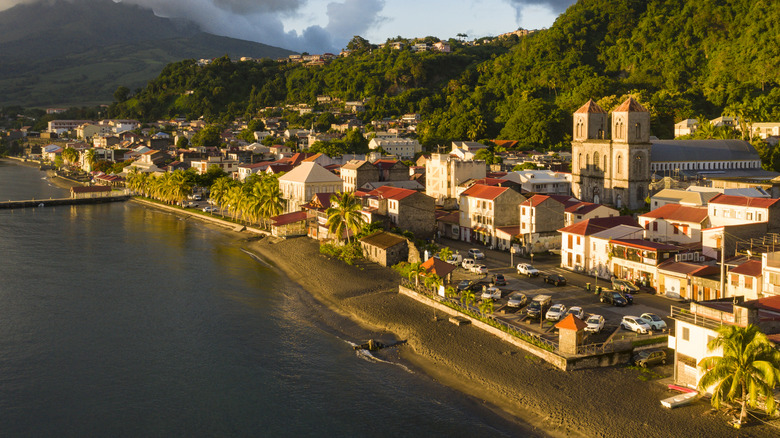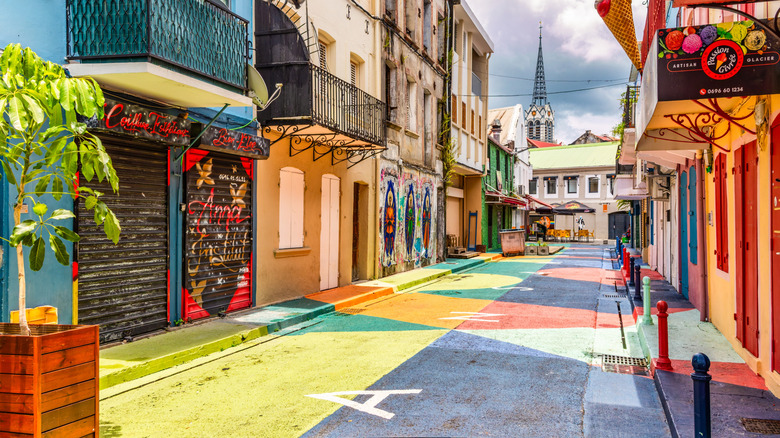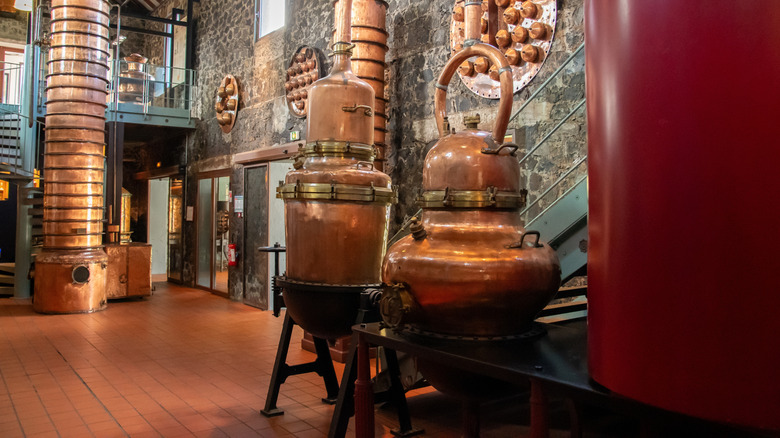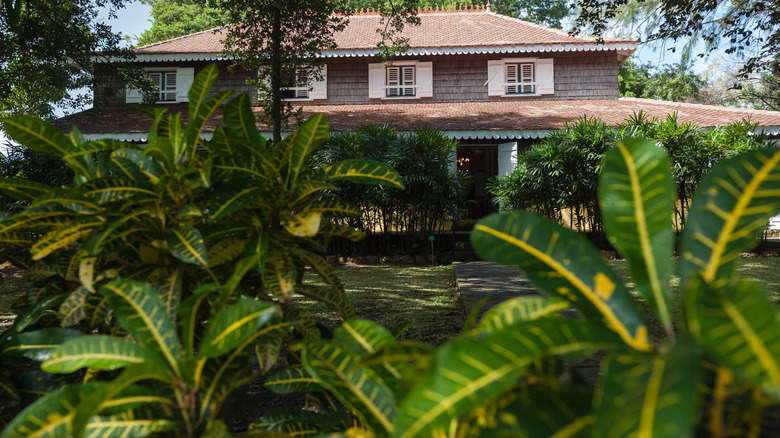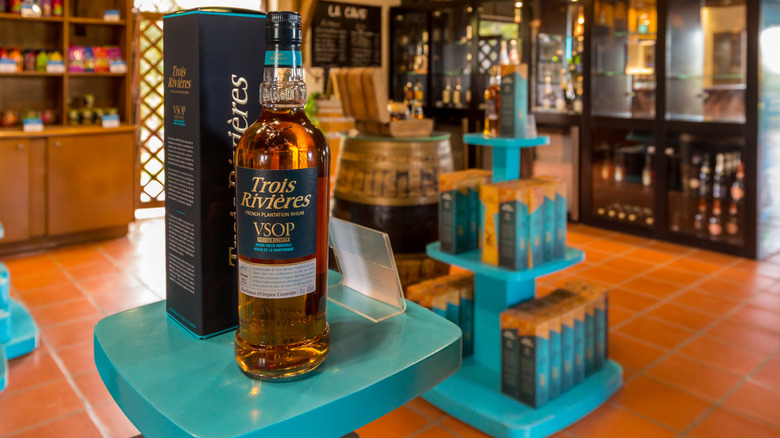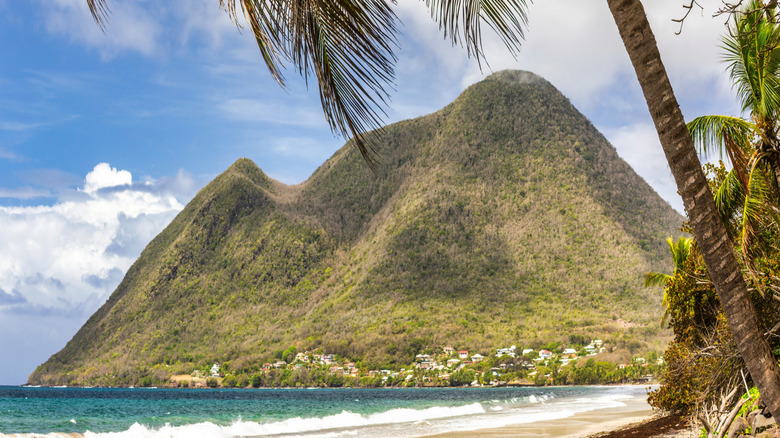This Scenic Martinique Route Leads Through Some Of The Best Distilleries And Rummeries In The Caribbean
For many, a vacation to the Caribbean is a chance to relax, unwind, and chill on a white sand beach. The only way to make such a scene better is to be sipping on a tropical cocktail, preferably one with locally-distilled rum. However, in between beach sessions, one common island activity is browsing a distillery. For example, one of the most wildly popular tourist attractions in Curacao is a vibrant distillery where you can sample Caribbean delights. But, for sheer volume, nothing beats the Rum Road of Martinique.
This gorgeous French island, nestled between Dominica and St. Lucia, is world-renowned for having some of the best rum in the world, so what better way to plan your vacation than by hitting as many distilleries and rum makers as possible? Even if you're not a huge fan of spirits, this route takes you all over the island, allowing you to get the full Martinique experience.
To help you plan your journey, we've compiled a daily itinerary to hit the top 10 distilleries in the country. We've spread them out over four days, but feel free to adjust your travel according to your needs. We've also grouped nearby distilleries by region for added convenience, but Martinique is small enough that it only takes a couple of hours to drive from one side to the other. So let's explore this unique and nuance spirit, Caribbean style.
Day one: Central and Western Martinique
No matter where you're visiting from, you'll need to fly into the Martinique International Airport, which is just east of the island's capital city, Fort-de-France. The best way to take the rum tour is to rent a car, so it helps to know at least a little French, if possible. English may be spoken in the more tourist-friendly areas, but the national language is French, so keep that in mind as you venture across the island. Also, as it is in France, they drive on the right side of the road, so it's relatively easy to get around if you're from the United States.
The closest distillery to the airport is La Favorite, one of only two family-run distilleries on the island and just 11 minutes away. Here, they still make rum the old-fashioned way, using a steam engine from 1906. They also source hand-cut sugar cane, ensuring the highest quality possible. From there, the next stop is about 40 minutes north of La Favorite, driving along the Western Martinique coastline. Distillerie Neisson is the other family-operated distillery on the island, and it's been in production since 1931. You'll know you're close when you see the famous Rhum Neisson sign out front.
The last stop for day one is the Depaz Distillery, which is situated at the base of Montagne Pelee, and less than 20 minutes from Distillerie Neisson. If you're feeling adventurous, take a hike up the peak to get some of the best views on the island. Depaz is a sprawling estate where rum enthusiasts can wander at their leisure. The scenery is incredible, but the rum is the real star of the show, as it's highly coveted by connoisseurs. At night, the coastal city of Saint Pierre is probably best for accommodations.
Day two: The Northern tip to the heart of Martinique
The second day of the rum tour will head to the Northern tip of Martinique. Here, there are two distilleries that are practically next door to each other. The first is Distillerie H.B.S., which is just about an hour north of the aforementioned Depaz Distillery. H.B.S. is a relatively small operation, only using 3 hectares (about 7.4 acres) of sugar cane. Because of its small-batch distillation, bottles of H.B.S. Rhum are something of a luxury item, just in case one wants to have a coveted and rare souvenir.
Next, Distillerie J.M. is 20 minutes east (and a little bit south) of H.B.S. In fact, the distilleries are so close to each other that they share sugar cane fields. The scenery here is spectacular, especially because of the small river flowing through the estate. J.M. grows five varieties of sugar cane and is well-known for its smooth, delicious aged rums.
The next stretch takes us south, down the Northeastern coastline for about an hour, until we reach the Habitation Saint-Etienne (HSE) Rum Factory in the small town of Gros-Morne, about an hour from the island's capital. Since this rummery is in the heart of Martinique, it's surrounded by dense, tropical jungle. This is also one of the more modern rummeries on the island, as the operation underwent renovations in 1994. Because of HSE's remote location, it's not close to many hotels, so you might want to head into Fort-de-France for the night. You can look at our picks for the best places to stay in Martinique to help you plan.
Day Three: A fabulous garden and the Southeastern edge of the island
By now, you might be getting used to waking up in paradise in the French Caribbean. It also helps to learn as much French along the way to help you get from distillery to distillery. From HSE, the next stop is Habitation Clement, which is about a 40-minute drive from Habitation Saint-Etienne, if you take the scenic route. Clement is also one of the most-visited distilleries on the island, thanks in part to its gorgeous onsite garden. On average, visitors can expect to take about 90 minutes to two hours for the complete tour, so plan accordingly.
The next distillery, Habitation du Simon, is a quick 10- to 15-minute drive from Clement, making it super convenient and easy to access. If you only have three days to explore the Rum Road, you can keep going to the last two options, La Mauny and Trois Rivières. Otherwise, take advantage of a short travel day and experience some of the laid-back scenery that Southern Martinique has to offer.
Habitation du Simon is one of the most recent distilleries on the island, starting in 2016. However, the site used to be a regular cane sugar mill, which operated during the 1700s and 1800s. In addition to rum, Le Simon also produces artisanal wine, just in case you need a break from sipping on hard liquor. For overnight accommodations, you can find luxurious villas and other stays nearby.
Day Four: The two oldest distilleries in Martinique
As the final day on Martinique, make sure to leave plenty of time for both distillery tours and a trip to the airport. Alternatively, if you really want to explore the island, you can leave early on day five so you can spend more time in Fort-de-France and experience Martinique's culture and cuisine. The first stop is Distillerie La Mauny, which is just about half an hour from Habitation du Simon.
La Mauny was founded in 1749, making it one of the oldest distilleries on the island. One of the unique features of this distillery is its red and white train, which takes guests on a complete tour of the grounds. La Mauny takes its sugar cane seriously, so much so that it helped found a local organization designed to help local planters cultivate the best crops possible. This commitment to excellence is present in each bottle, which you can find at the gift shop at the end of the tour.
The final stop on the Rum Tour is the Trois Rivières Distillery, which is less than 20 minutes away from La Mauny. This is also the only distillery that is not currently in operation, as it ended distillation in 2004. Today, La Mauny handles the actual rum production, allowing Trois-Rivières to act as a museum, since it was the oldest distillery, founded in 1660. One of the most notable aspects of this site is its vintage windmill, which overlooks the Caribbean Sea. Once you're done at Trois Rivières, it's just about a 30-minute drive north to the airport.
What to expect when planning a rum-centric trip to Martinique
As with most Caribbean islands, Martinique has a tropical climate, meaning it's hot and muggy during the summer. Peak travel season is between November and March, which is also after hurricane season in the region. However, if you want to see these distilleries harvesting sugar cane, it's best to visit between February and June, which are the dry months.
Because Martinique is a French colony, it abides by European Union rules. Americans will need a passport, and euros are the standard currency. Depending on where you go, U.S. dollars might be accepted, but it's often best to exchange money beforehand if possible. Also, many remote locales don't accept credit cards, so you should have cash on hand to pay for tours and bottles of rum.
In between distillery visits, there are other ways to make the most of your first trip to Martinique. The island is full of pristine beaches, crystal blue waters, and decadent restaurants. Since this route takes you through each part of the island, you'll be able to experience all of Martinique first-hand, which is perfect if you don't know when you'll be back.
